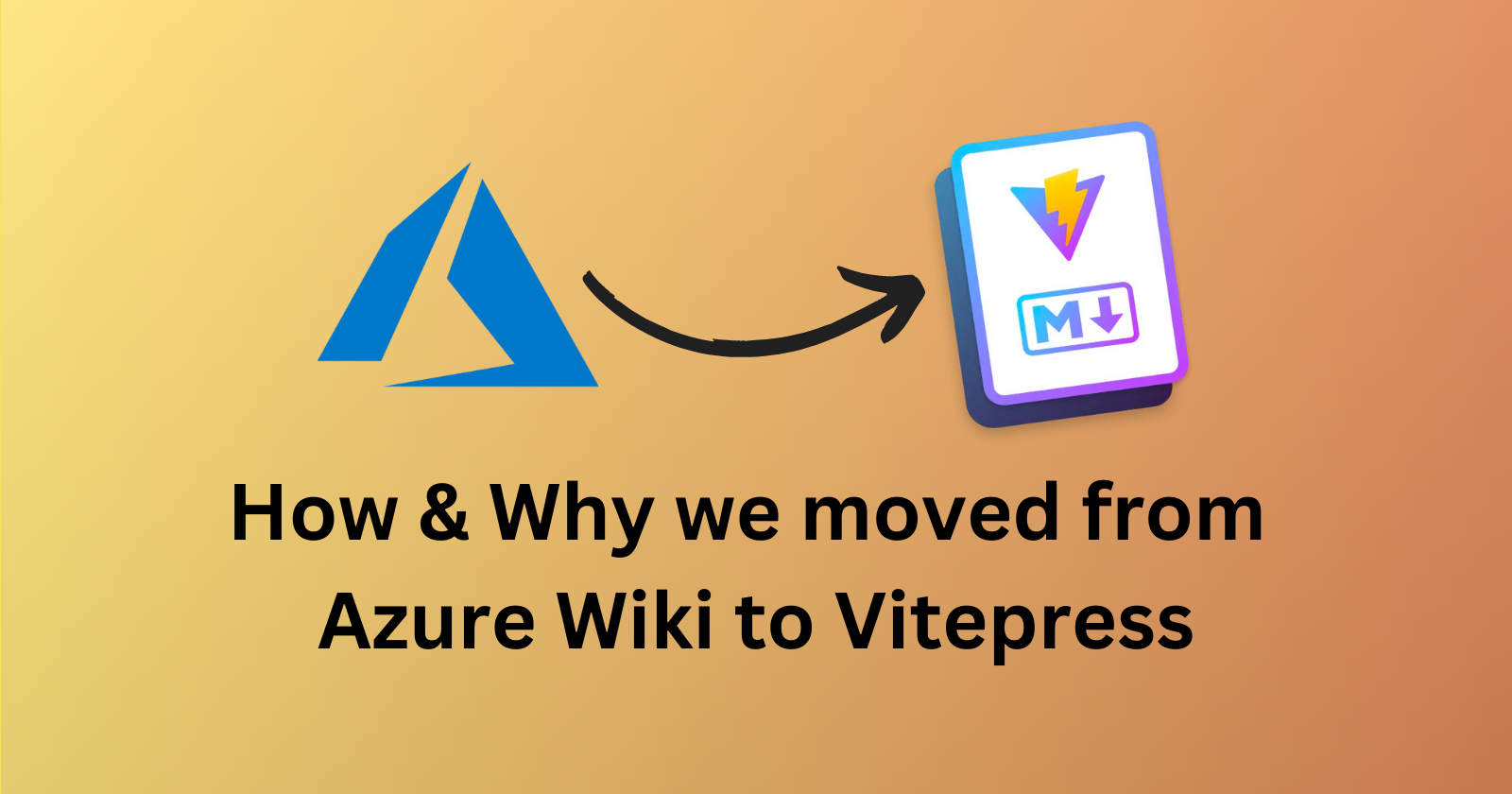Moving from Azure Git Wiki to Vitepress: A Painless Journey to Speedy Documentation
 Sidharthan Chandrasekaran Kamaraj
Sidharthan Chandrasekaran Kamaraj
In the world of software development, documentation is often an overlooked yet crucial aspect of a project's success. At our company, we rely on Azure DevOps for software development, and one of the included packages is Azure Git Wiki. Initially, we found Azure Git Wiki to be a convenient choice for documentation due to its rich markdown editor and support for features like Mermaid diagrams. However, as time went on, we encountered performance issues that hindered our productivity. The website became slow and sometimes unresponsive, and the search functionality was frustratingly sluggish. This situation led to undocumented findings and knowledge gaps within our team.
Faced with these challenges, we embarked on a journey to find an alternative documentation solution that would allow us to continue using markdown for documentation, offer a painless migration process, and enhance the overall documentation experience. Our search led us to Vitepress, a static site generator that proved to be the perfect fit for our needs. In this blog post, we'll delve into our transition from Azure Git Wiki to Vitepress, highlighting the reasons behind our decision and the steps we took to make it happen.
Why We Sought an Alternative
Performance Issues: The primary motivation behind our quest for an alternative documentation platform was the performance issues we encountered with Azure Git Wiki. The website's slowness and occasional unresponsiveness became major roadblocks to efficient documentation creation and access.
Slow Search: The search functionality in Azure Git Wiki was frustratingly slow, making it challenging to find the information we needed quickly. This hindered our ability to navigate and explore the documentation effectively.
Lack of Contributor Engagement: The combination of performance issues and slow search functionality led to a lack of enthusiasm among team members for contributing to the documentation. Valuable insights and findings remained undocumented, which was detrimental to our knowledge-sharing efforts.
Exploring Alternative Documentation Solutions
In our search for an alternative, we explored various static site generation tools, including Vuepress, Hugo, and Docusaurus etc., However, Vitepress emerged as the standout choice for several reasons:
Folder Structure: Vitepress offered an intuitive and easy-to-understand folder structure for organizing our documentation. This simplicity was crucial to ensuring that our team could easily navigate and contribute to the documentation without getting lost in complex project structures.
Search Functionality: Vitepress came with built-in search functionality, addressing one of our primary pain points. This feature greatly improved the speed and efficiency of searching and navigating through our documentation.
Community Support: Vitepress had an active community, with plugins and themes readily available. This allowed us to enhance our documentation with features like Mermaid diagrams and customize the look and feel of our documentation site effortlessly.
Migration Process
Our migration from Azure Git Wiki to Vitepress was carefully planned and executed. Here are the key steps we followed:
Create a New "Docs" Folder: We started by creating a new folder named docs and moved our existing documentation into this folder while maintaining the original folder structure.
Configure Vitepress: We made the necessary configuration changes in the config.js file located inside the .vitepress folder. These changes included setting up the navigation structure, theme customization, and enabling the built-in search functionality.
Local Testing: Before deploying the documentation, we ran the site locally to ensure that everything worked as expected. This step allowed us to catch any issues or discrepancies in the migration process.
CI/CD Pipeline: To ensure continuous deployment, we configured a CI/CD pipeline in our development environment. This automated the process of publishing changes to our Vitepress documentation site whenever updates were pushed to the repository.
Benefits of the Transition
The transition to Vitepress brought about several notable benefits:
Speed and Performance: Vitepress proved to be significantly faster and more responsive than Azure Git Wiki, eliminating the frustrations we previously experienced.
Improved Search: The built-in search functionality in Vitepress drastically improved the speed and accuracy of searching within our documentation, making it a joy to use.
Enhanced Contribution: With the improved performance and user-friendly interface of Vitepress, team members were more willing to contribute actively to the documentation, leading to a more comprehensive and up-to-date knowledge base.
Conclusion
In summary, our journey from Azure Git Wiki to Vitepress was driven by the need for faster, more responsive documentation that would encourage team collaboration and knowledge sharing. Vitepress not only met but exceeded our expectations with its simplicity, performance, and search capabilities. The painless migration process ensured a smooth transition, and the positive impact on our team's productivity and engagement was immediately evident.
By making the switch to Vitepress, we've not only improved our documentation workflow but also created a more conducive environment for learning and sharing within our development team. The power of a well-structured and efficient documentation system cannot be understated, and with Vitepress, we've found a solution that fits our needs perfectly.
Subscribe to my newsletter
Read articles from Sidharthan Chandrasekaran Kamaraj directly inside your inbox. Subscribe to the newsletter, and don't miss out.
Written by

Sidharthan Chandrasekaran Kamaraj
Sidharthan Chandrasekaran Kamaraj
Yet another developer, learning new things everyday :)